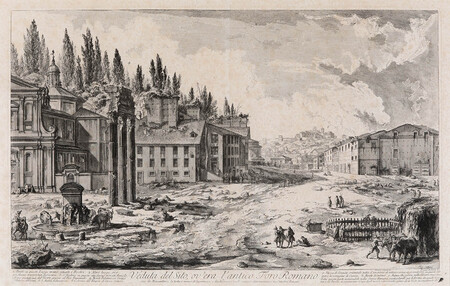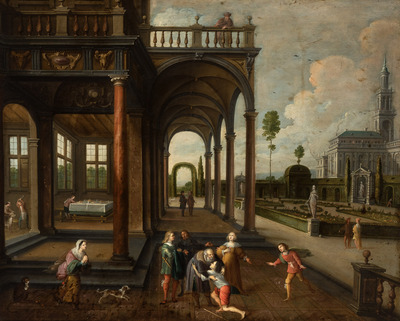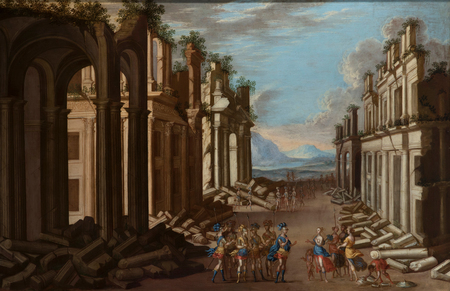Ruins in the baroque
The vaccino field or cow pasture, this was the name given in 1600 to the most important place of the greatest empire of antiquity, the Forum of Rome. The glorious past was far behind, its memory was maintained thanks to literature, the surviving ruins barely gave an account of what they once were. The space where sculptures, temples and basilicas used to dazzle had become the work area of Rome’s shepherds. Only the arches of Titus, Septimius Severus and Constantine remained standing. The curia was a church, as was the temple of Antony and Faustina, the Colosseum, pride of the Flavians, had been reduced to rented apartments. The panorama, bleak as it may seem, was the perfect source of inspiration for the artists. The fallen capitals and columns would be taken as a reference to create imaginary and fantastic worlds based on the classical past. The paintings that reflected these scenarios would end up being called “caprices of ruins”.

Religious themes were frequent in Picasso’s production in those years, under the tutelage of Antoni Caba (see “Roman Interior Scene” at the Picasso Museum in Barcelona). But it was in the smaller formats, oil paintings on cardboard like the one we are dealing with here, where we find the religious theme treated with greater spontaneity of stroke (similar to “Baptism”, 1895, Picasso Museum). In style and technique he moves away from the influence of his academicist masters.
The scene shows a Tridentine mass (the ritual is performed with the back to the parishioners). Altar servers and friars kneel or bow their heads with reverence, directing their bodies towards the figure of the parish priest, who occupies the compositional center in front of the altar. The tabernacle glows with candles lit from the candlesticks. These confer a play of backlighting that shades the blacks and lights up the whites and golds, bathing the interior with intimate qualities. This work can be compared to “The First Communion” (1896), in which the figures also withdraw into their interior before the sacredness of the event. The Picasso’s genius, the rebellious breath, emerges in every brushstroke of this composition with a traditional theme.
The work we present here brings together the most representative features of the genre of ruins and architectures and the author’s own. The illusion and dynamism reaches a new height, creating the sensation that the ruins themselves are collapsing. Fallen columns are scattered around the characters, almost as if dodging disaster.
The genre of ruins and caprices would continue until the eighteenth century linking with the neoclassical tastes of the time. Other examples of this type can be found in works by Piranesi on the subject of engravings and in painting by Hubert Robert and Paolo Panini.
During the Baroque period in Spain the works of Juan de La Corte and other architectural painters encouraged the development of architecture itself, many of the court painters would receive commissions for ephemeral architecture such as triumphal arches, mock facades, as well as the design of monumental altarpieces and the portals of churches and palaces.







